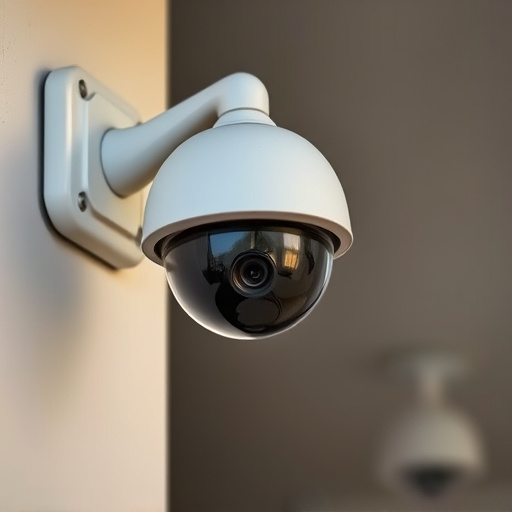Installing multiple realistic fake security cameras enhances security by deterring intruders through an illusion of increased surveillance. Strategically place them with clear lines of sight at various heights and orientations for optimal deterrent effect. Ensure good mounting surfaces, lighting, and lines of sight for indoor and outdoor setups. Regularly test feeds and adjust settings for clarity and performance.
“Enhance your home or business security with our comprehensive guide to installing multiple fake security cameras. Discover the art of choosing the right types, strategically planning placement, and preparing installation surfaces for optimal effect. Learn the step-by-step process of mounting and connecting these decoys, and master the art of testing and adjustment for maximum visibility. Elevate your security game with this essential fake camera installation tutorial.”
- Choose the Right Fake Camera Types
- Plan Your Placement Strategy
- Prepare the Installation Surface
- Mount and Connect the Cameras
- Test and Adjust for Optimal Visibility
Choose the Right Fake Camera Types
When selecting fake security cameras for your installation project, it’s crucial to understand the various types available and choose those that align with your needs. Different models offer distinct features, from realistic design elements to advanced motion-activation capabilities. For a comprehensive setup, consider installing multiple fake cameras strategically placed around the area you wish to monitor. This approach creates an illusion of enhanced security, deterring potential intruders as it becomes increasingly difficult for them to determine where actual surveillance is taking place.
Installing Multiple Fake Security Cameras allows you to create a layered defense system. By spreading out realistic-looking decoys, you can cover more ground and fool would-be thieves or vandals. Ensure that each camera has a clear line of sight and is positioned at eye level or slightly elevated to mimic real surveillance equipment, enhancing the overall effectiveness of your security measures.
Plan Your Placement Strategy
When planning your fake security camera installation, strategic placement is key. Consider both visible and hidden locations to create an effective deterrent for potential intruders. Since the goal is to simulate genuine surveillance, group multiple cameras in various angles around your property. This can include installing replicas near entry points like doors and windows, as well as positioning them on rooftops or trees for a comprehensive view.
For added realism, vary the camera types and orientations. Include both dome and bullet cameras, ensuring they’re positioned at different heights and directions. By combining these tactics, you’ll create an intricate network that makes it difficult for would-be thieves to identify genuine security equipment, enhancing the overall protection of your space.
Prepare the Installation Surface
Before installing your fake security cameras, it’s crucial to prepare the surface where they will be placed. Whether you’re setting them up indoors or outdoors, ensure the area is clean and free from any debris or obstacles that could interfere with the mounting process. For optimal results when installing multiple cameras, choose a flat, sturdy surface that offers good visibility. This might be a wall, ceiling, or even a dedicated security stand, depending on your setup.
When preparing the installation surface, consider factors like lighting and potential lines of sight. Fake security cameras are designed to mimic real ones, so positioning them strategically can enhance their deterrent effect. Make sure the area is well-lit to maximize the camera’s field of view and ensure clear images, especially if you’re installing outdoor models that need to capture footage during low-light conditions.
Mount and Connect the Cameras
When installing multiple fake security cameras, proper mounting is crucial for optimal positioning and visual coverage. Secure each camera to a sturdy surface, ensuring they are at eye level or slightly elevated to capture clear footage. Use brackets or mounts designed specifically for outdoor use if installing outdoors, to withstand varying weather conditions. Connect the cameras to a central power source using the provided cables; ensure the wiring is neat and secure to avoid damage. For indoor setups, run the cables discreetly through walls or ceilings, ending at a recording device or surveillance hub. This step ensures your fake security cameras are not only visible but also functional, providing a comprehensive surveillance network.
Test and Adjust for Optimal Visibility
When installing multiple fake security cameras, it’s crucial to test and adjust each camera for optimal visibility. Start by ensuring each camera has a clear line of sight, free from obstructions like trees or buildings that might block its view. Adjust the camera’s angle and positioning to capture the desired area without overlapping fields of view, which can create confusion during monitoring.
Use your smartphone or computer to test the camera’s feed, checking for clarity, resolution, and lighting conditions. Fine-tune the camera settings—such as IR intensity, motion detection sensitivity, and night vision quality—to achieve the best possible visibility. Regularly recheck these adjustments as environmental factors like weather changes or new obstructions can impact the camera’s performance over time.
Installing multiple fake security cameras can significantly enhance home or business security, deterring potential intruders. By carefully choosing the right camera types, planning strategic placement, preparing installation surfaces, and meticulously mounting and connecting each device, you can create an effective surveillance system. Regular testing and adjustments ensure optimal visibility, providing a robust deterrent against crime. Remember, the key to success lies in attention to detail and a comprehensive approach to fake security camera installation.
